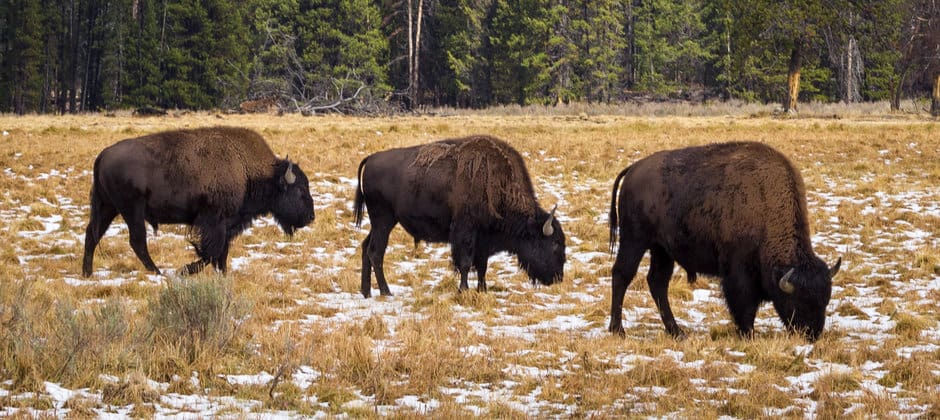Share this article
U.S Fish and Wildlife Service sued to compel bison listing
Three advocacy groups sued the U.S. Fish and Wildlife Service last week, asserting that the agency unlawfully rejected their petition to list the distinct population segment of Yellowstone bison (Bison bison bison) under the Endangered Species Act.
The complaint, brought by the Western Watersheds Project, Friends of Animals and the Buffalo Field Campaign, argues that Yellowstone-area bison should be listed under the ESA due to loss of its habitat, climate change and current management policies, which allow culling and hunting of the migratory herds when they are outside of the park.
The herd of Plains bison living in and around Yellowstone National Park is the oldest and largest wild population of the subspecies, and the only one in the United States descending, in part, from a continuously wild herd. According to the National Park Service, the herd numbered nearly 5,000 bison in 2019. It is managed under an Interagency Bison Management Plan, to maintain herd health and manage the spread of brucellosis. That plans sets a population goal for the bison of around 3,000 individuals.
In September 2019, the Service issued a 90-day finding on the petition, concluding that no further study was needed on whether the Yellowstone-area bison is threatened or endangered. The agency concluded that the petitions submitted to secure ESA protections for bison did not present substantial scientific or commercial information indicating listing was warranted for the Yellowstone bison population.
Last year’s 90-day finding came after the agency was ordered in 2018 to undertake another review, after rejecting several previous petitions to list the bison. “The Service must explain why the evidence supporting the petition is unreliable, irrelevant or otherwise unreasonable to credit rather than simply pick and choose between contradictory scientific studies,” said the order.
In the complaint filed last week, the three groups assert it is undisputed the Yellowstone bison’s range has decreased 85% as compared to its historical range. They also stress that the Yellowstone bison vitally contribution to the viability of the species, such that without that population, the species would be in danger of extinction, or likely to become so in the foreseeable future, throughout all of its range.
The plaintiffs argue that therefore the Service erred in issuing its 90-day finding, by failing to consider the drastic reduction in range and instead, determining that the population was stable within a small portion of its former range. They contend that the agency did not properly apply the legal standards of the ESA and ignored its plain language requiring a status review if a petition presents substantial evidence that a species may be endangered or threatened.
Plaintiffs are asking the court to vacate the U.S. Fish and Wildlife Service’s 90-day finding and order the agency to prepare a 12-month status review of the district population segment of Yellowstone bison.
Header Image: Three groups have sued the U.S. Fish and Wildlife Service to compel listing of Yellowstone bison under the Endangered Species Act. ©Christian Collins








